Why you can trust Tom's Hardware
4K Gaming Performance
Our gaming tests consist of a "standard" suite of eight games without ray tracing enabled (even if the game supports it), and a separate "ray tracing" suite of six games that all use multiple RT effects. We've already tested the RTX 4090 Founders Edition at 1080p, and our focus on AIB cards will be the 4K and 1440p performance.
Please note that testing of the Colorful card was conducted on our standard test bed, a few weeks ago (around the time the RTX 4080 launch took over my free time). This is the same as the other 4090 cards, and not the new and improved test bed we used in the RX 7900 XTX / XT review. This was also before Fortnite broke our benchmarks and changed its settings, and the same for Forza Horizon 5 and Total War: Warhammer 3.



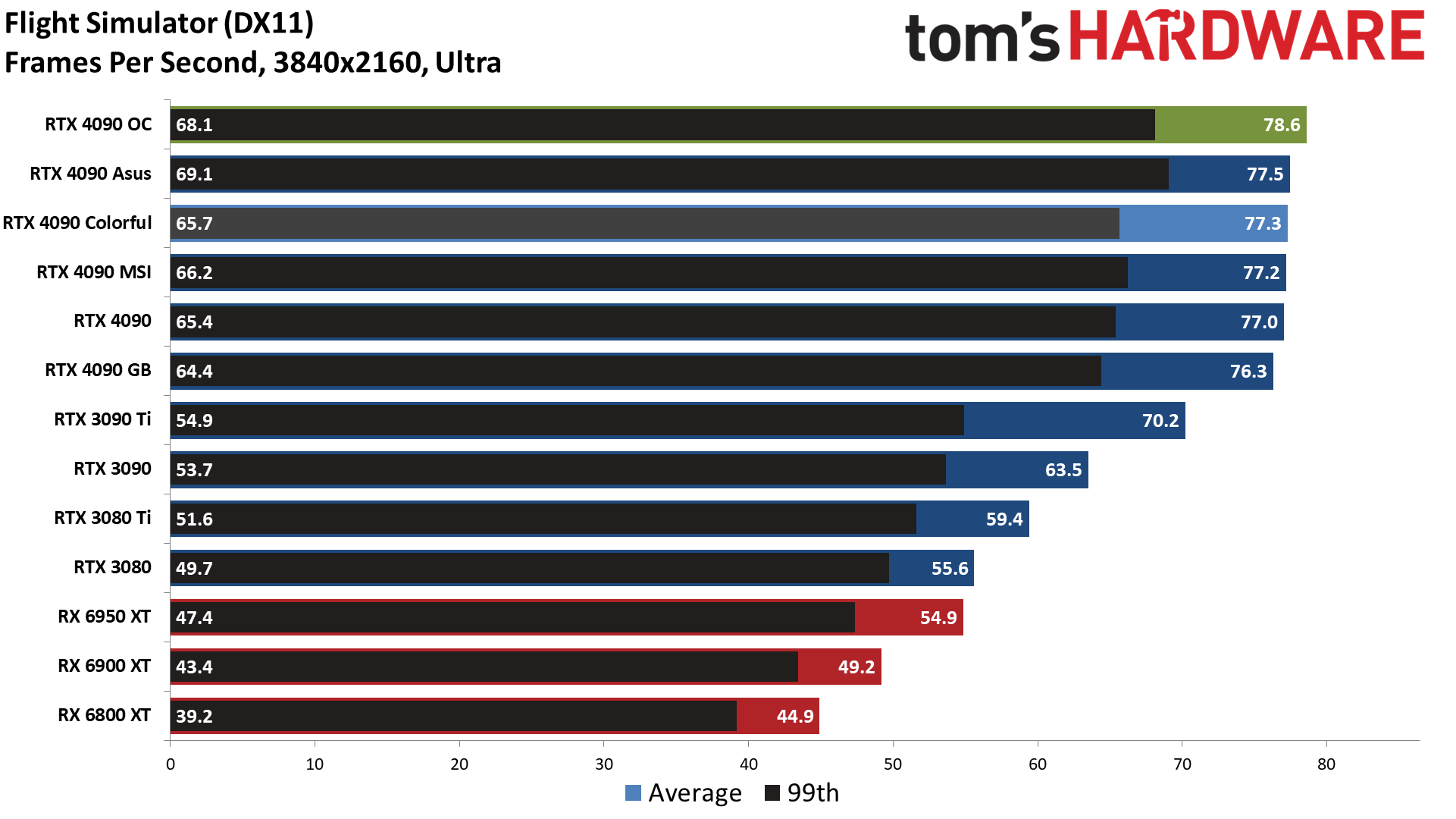


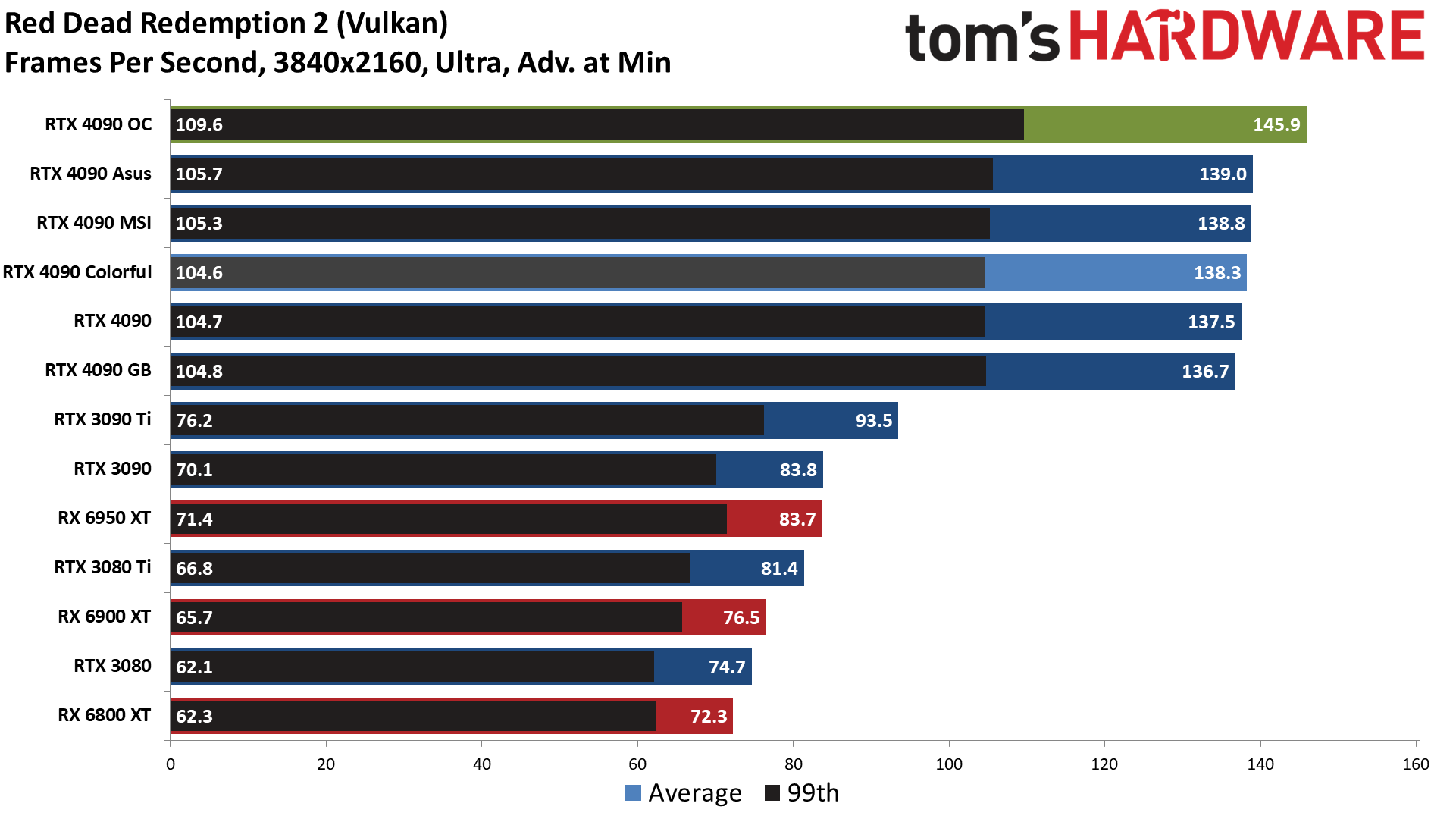








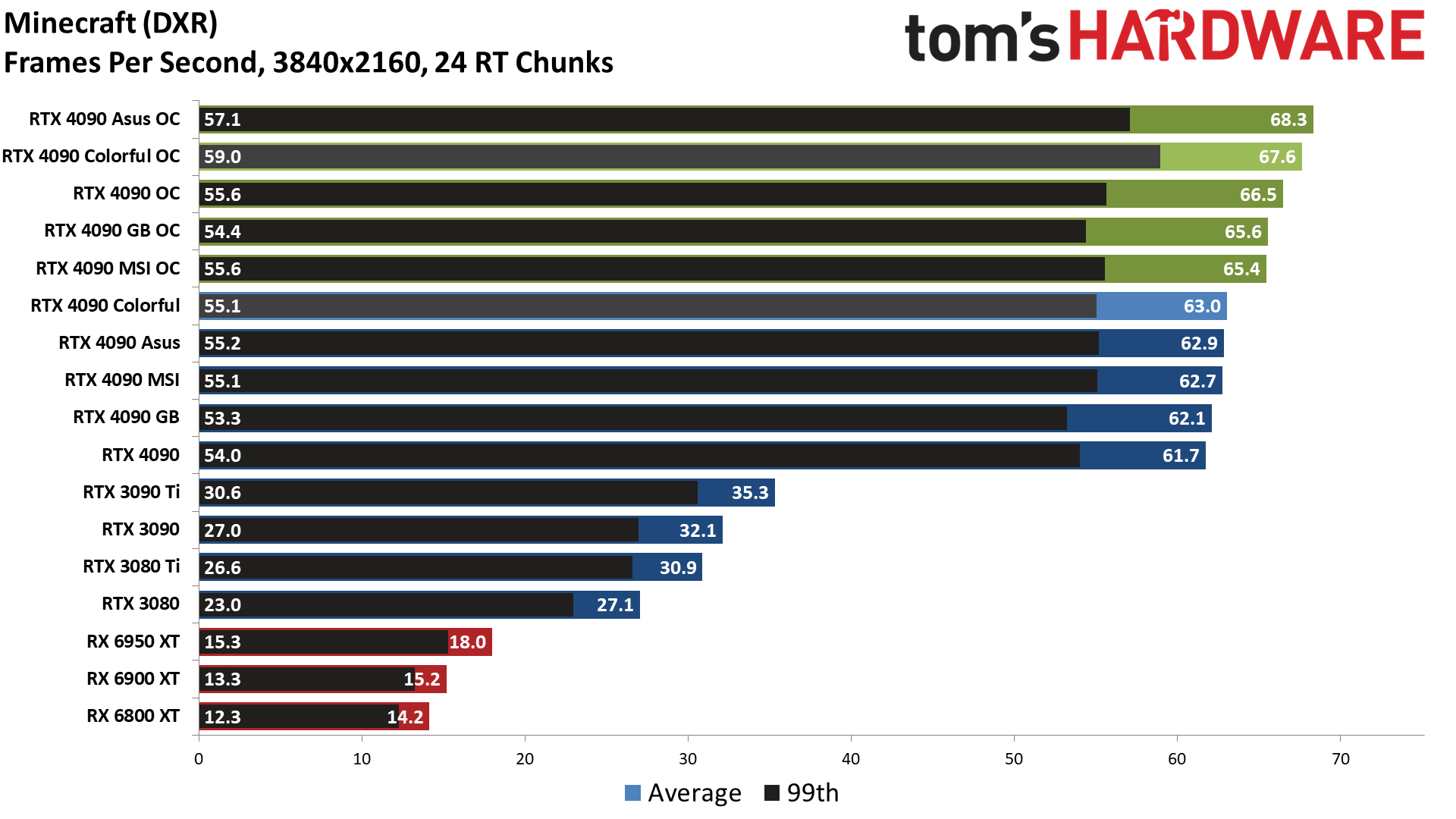
The Colorful RTX 4090 Vulcan OC ends up right in the mix of the 4090 cards. It ties the MSI model while falling just slightly behind the Asus card in our 4K rasterization tests, but the 0.6% deficit is well within the margin of error. That applies to all the individual tests as well, where it's always in the top three spots for the 4090 models (not counting the manually overclocked Founders Edition).
At worst, Colorful's card came in 2.2% behind the Asus card (in Forza Horizon 5), and at best it was 3.9% faster than the Gigabyte card (in Total War: Warhammer 3). That gives a good indication of just how narrow the spread is among all the RTX 4090 cards, which means price, features, and any other extras will generally take precedence over performance.
The ray tracing results tell a similar story, except now we have overclocking performance in the charts as well. The Colorful 4090 lands in second place for both stock and overclocked performance, right behind the Asus card — technically tied with it at factory stock settings.
Also note the massive gulf between the 4090 cards and the next-closest RTX 4080 and 3090 Ti. If you want maximum ray tracing performance, the 4090 is the card you'll want — and DLSS tends to be supported in most DXR games, so you can get an additional boost there for a slight loss in image fidelity.
1440p Gaming Performance



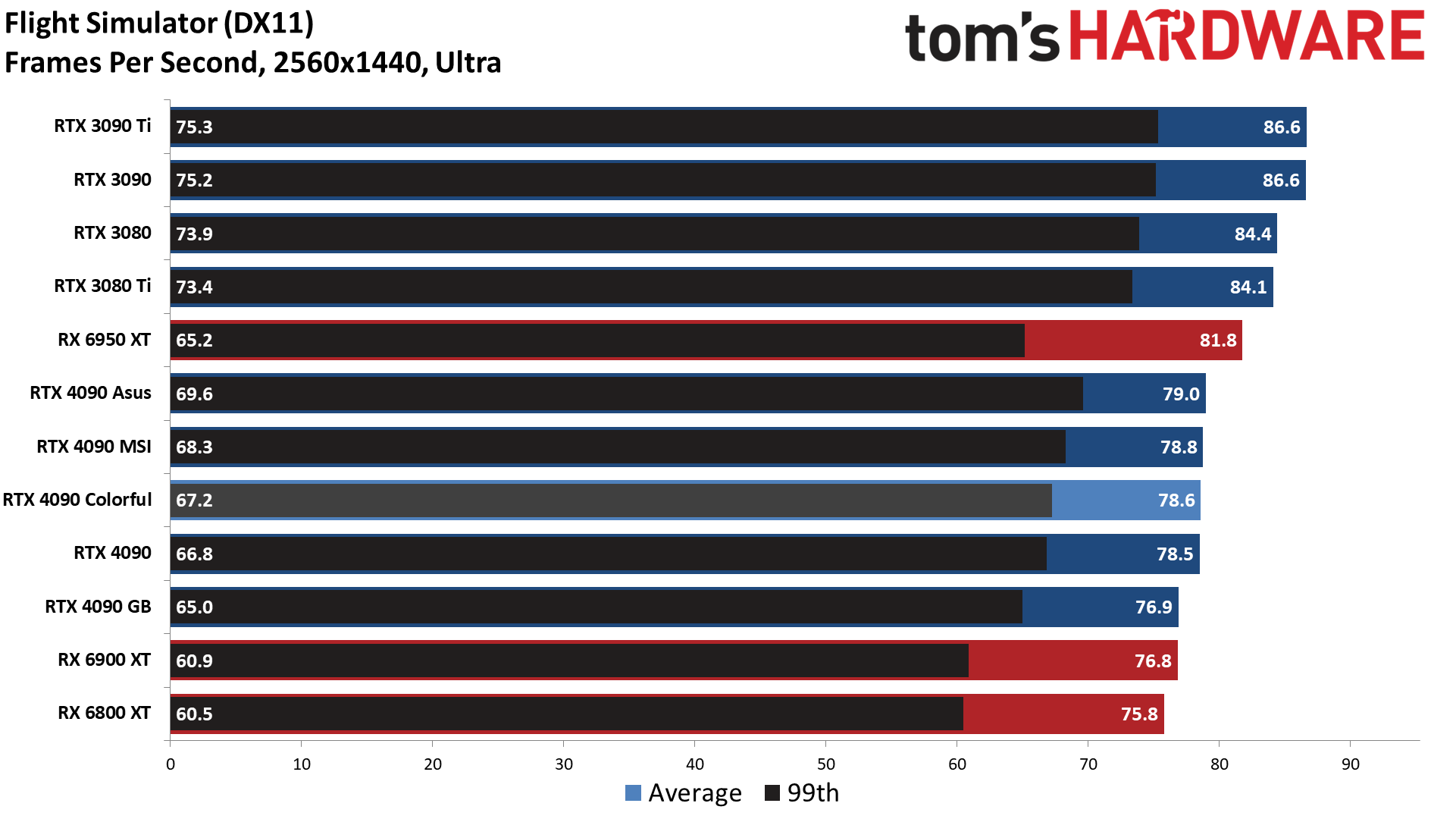






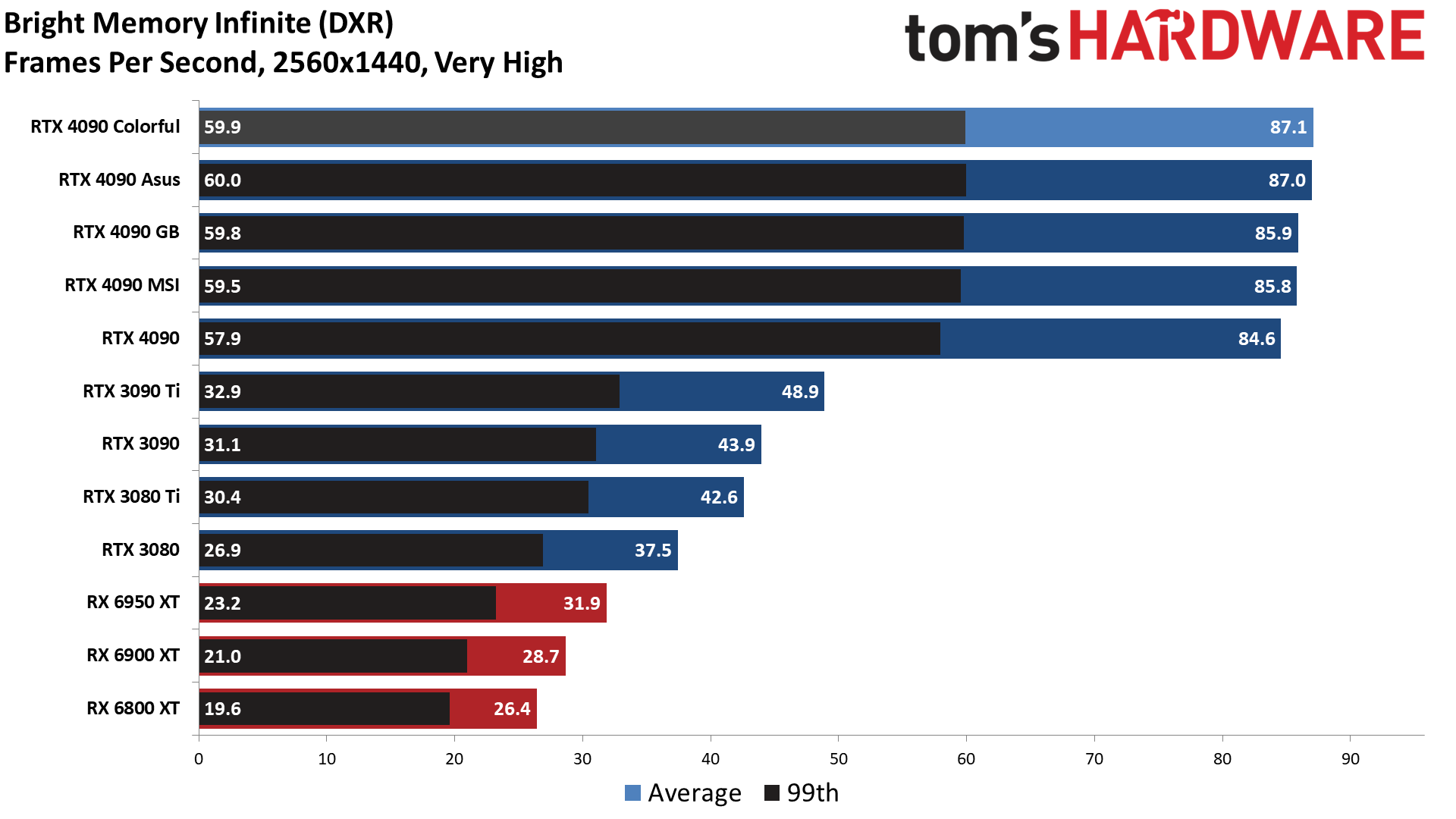

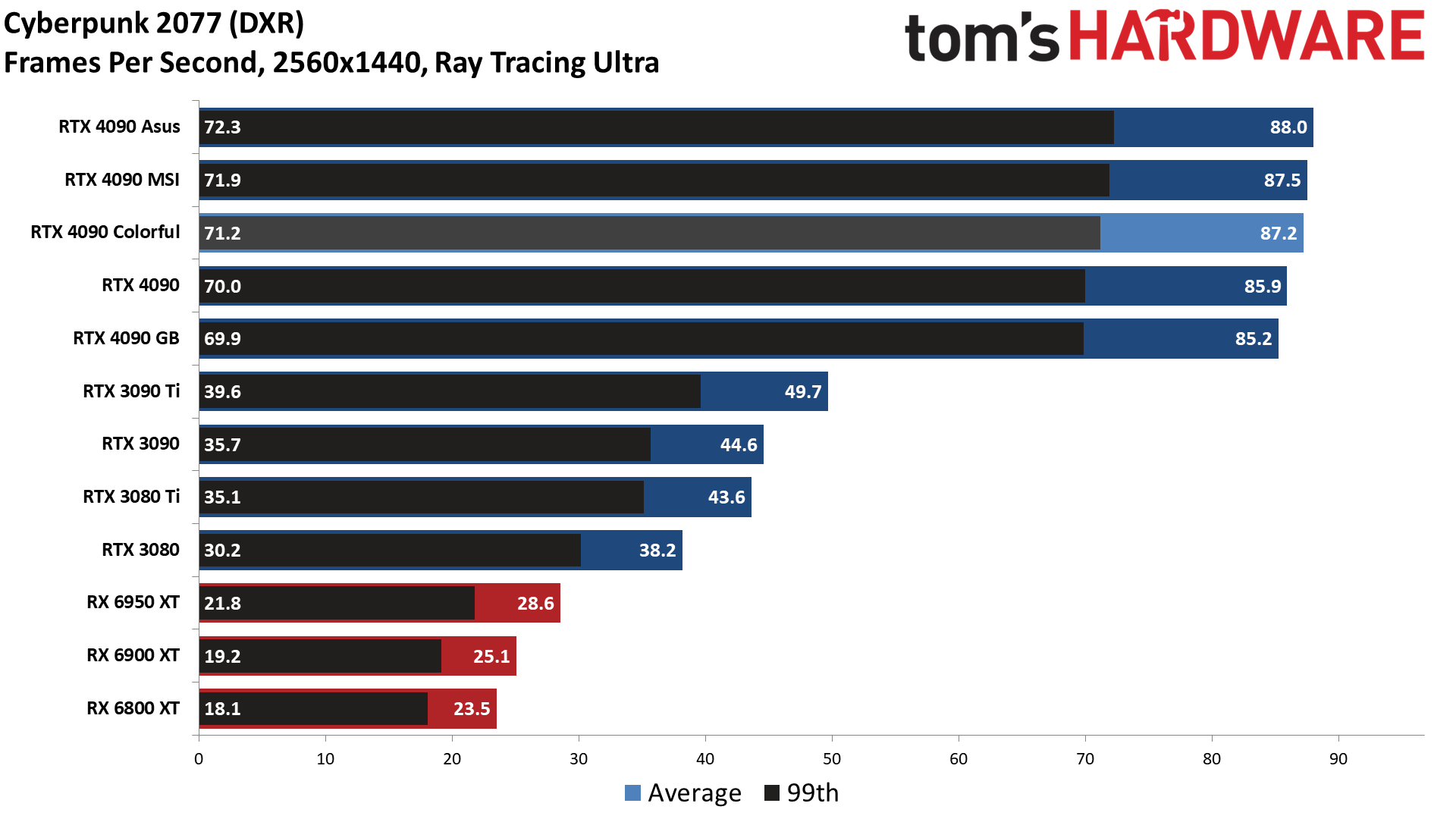



Dropping the testing resolution to 1440p improves frame rates while also narrowing the gap between the GPUs. The 4090 still ranks at the top, but the 4080 and RX 7900 XTX are basically tied and only about 11% slower than the 4090. That's in rasterization benchmarks, though, and the gap in ray tracing games remains quite large.
In our DXR suite, the 4090 cards still hold on to an approximately 35% advantage over the next closest GPU, the RTX 4080. Next comes the 3090 Ti, followed by the 3090 and AMD's 7900 XTX. The 4090 ends up being about 90% faster than AMD's newcomer.
As for the Colorful RTX 4090, it places in second for both the rasterization and ray tracing results, once again just behind the Asus card.
Test Setup for Colorful RTX 4090 Vulcan OC
We updated our GPU test PC and gaming suite in early 2022 to a Core i9-12900K and the other hardware shown in the test equipment list. We're now moving on to testing with Core i9-13900K (and Ryzen 9 7950X in some cases), which you can see in our more recent AMD RX 7900 XTX and XT review. However, we've got a few final cards that were tested and reviewed with our previous test suite.
- MORE: Best Graphics Cards
- MORE: GPU Benchmarks and Hierarchy
- MORE: All Graphics Content
Get Tom's Hardware's best news and in-depth reviews, straight to your inbox.
Current page: Colorful RTX 4090 Vulcan OC: Gaming Performance
Prev Page Colorful RTX 4090 Vulcan OC: Design, Teardown, and Overclocking Next Page Colorful RTX 4090 Vulcan OC: Power, Temps, Noise, Etc.
Jarred Walton is a senior editor at Tom's Hardware focusing on everything GPU. He has been working as a tech journalist since 2004, writing for AnandTech, Maximum PC, and PC Gamer. From the first S3 Virge '3D decelerators' to today's GPUs, Jarred keeps up with all the latest graphics trends and is the one to ask about game performance.
-
OldWalter____IsMyDog You folks should do an article on how to buy Colorful products in the US - it seems super confusing and risky! Colorful makes some nice stuff, and the iGame Neptune OC 4090 is cool too, but for folks in the US (and Europe?) a review on a card like this is about as relevant as reading a review on a Chinese domestic market car when you're car shopping.Reply -
Vanderlindemedia In all the tests, none of the recent released 7900XTX / series of AMD are included, except for the noise test. There you'll see the 7900XTX in those graphs. Why is that? Now it looks like Nvidia is twice as fast as the whole AMD generation?Reply -
JarredWaltonGPU Reply
Page 3:Vanderlindemedia said:In all the tests, none of the recent released 7900XTX / series of AMD are included, except for the noise test. There you'll see the 7900XTX in those graphs. Why is that? Now it looks like Nvidia is twice as fast as the whole AMD generation?
"Please note that testing of the Colorful card was conducted on our standard test bed, a few weeks ago (around the time the RTX 4080 launch took over my free time). This is the same as the other 4090 cards, and not the new and improved test bed we used in the RX 7900 XTX / XT review. This was also before Fortnite broke our benchmarks and changed its settings, and the same for Forza Horizon 5 and Total War: Warhammer 3."
It's a third-party AIB card, and our standard is to mostly compare it to the reference card with the same GPU as well as any other AIB cards using the same GPU. The other cards are just there for reference.
So why does noise have the 7900 series? Well, first because I apparently forgot to not include them and used an updated spreadsheet that had those results. Oops. But also because the noise (and power) testing hasn't changed with drivers and such. I don't have truly "comparable" results from 12900K testing for the new AMD cards in a couple of games, or alternatively I don't have comparable data from all the other 4090 cards if I were to swap testbeds and retest.
But all of that misses the point that I'm really just evaluating the Colorful 4090 against the other 4090 cards. It's better in some cases (though the VRAM is likely just luck of the draw), but worse on noise levels. If you don't want a quieter 4090 card, and you can find it in stock, it's not a bad option.
